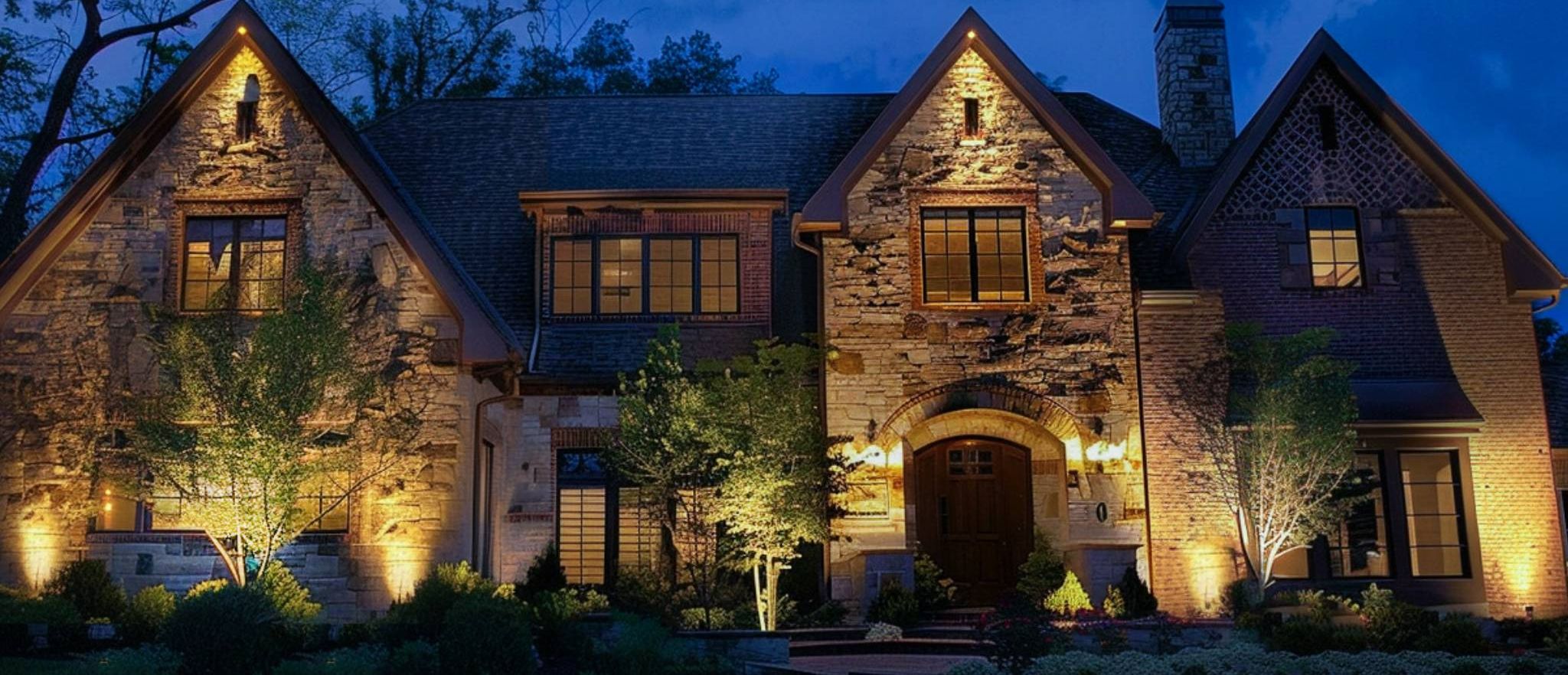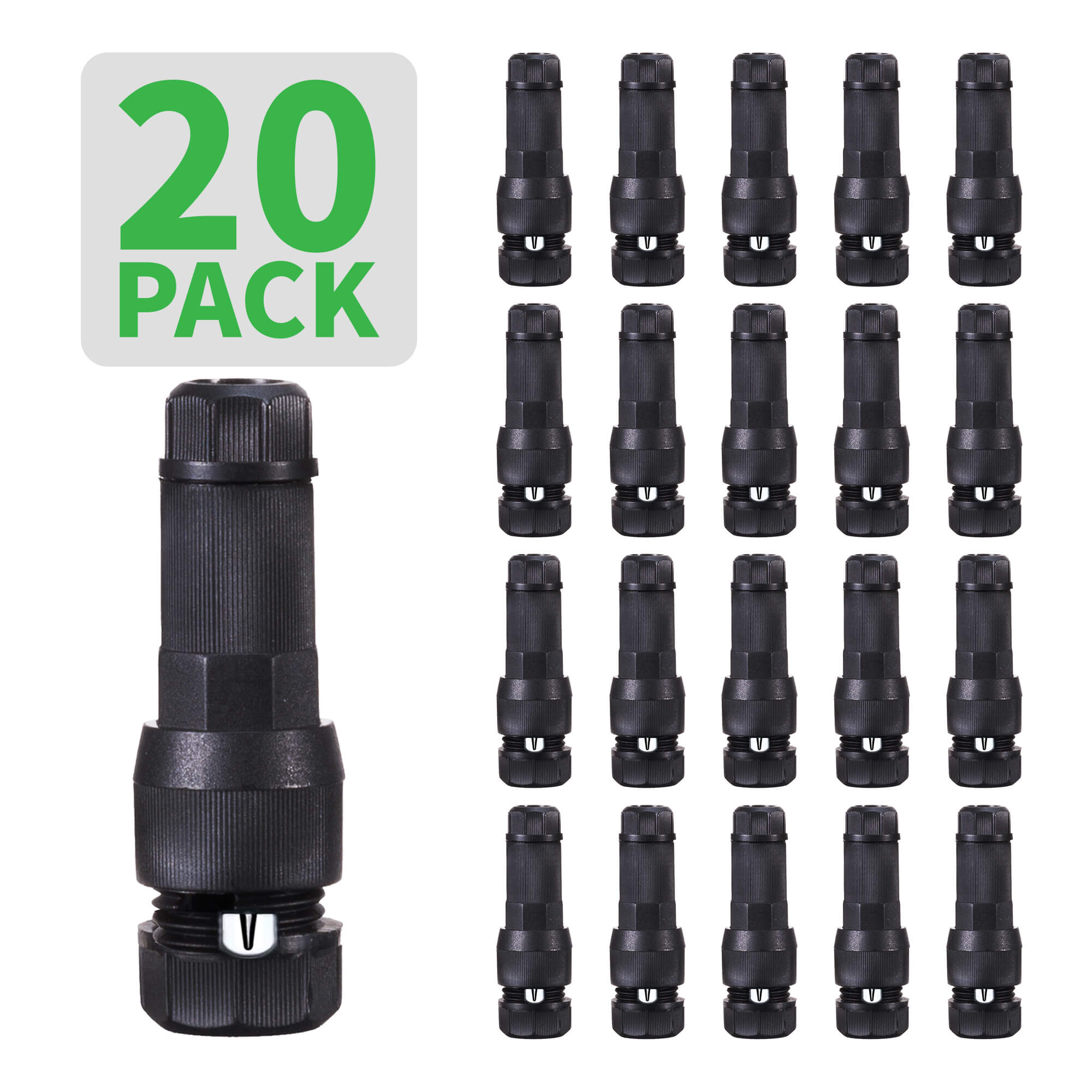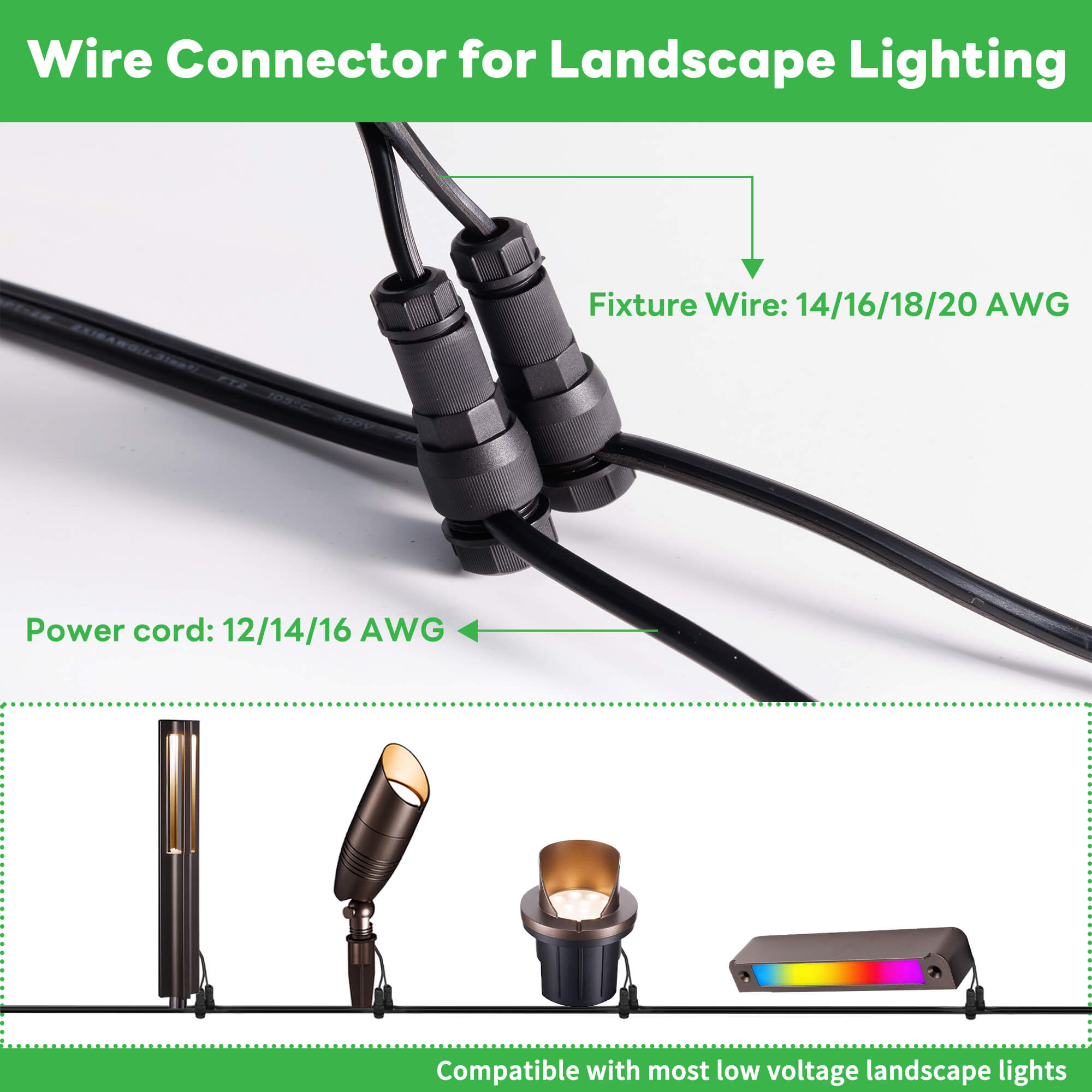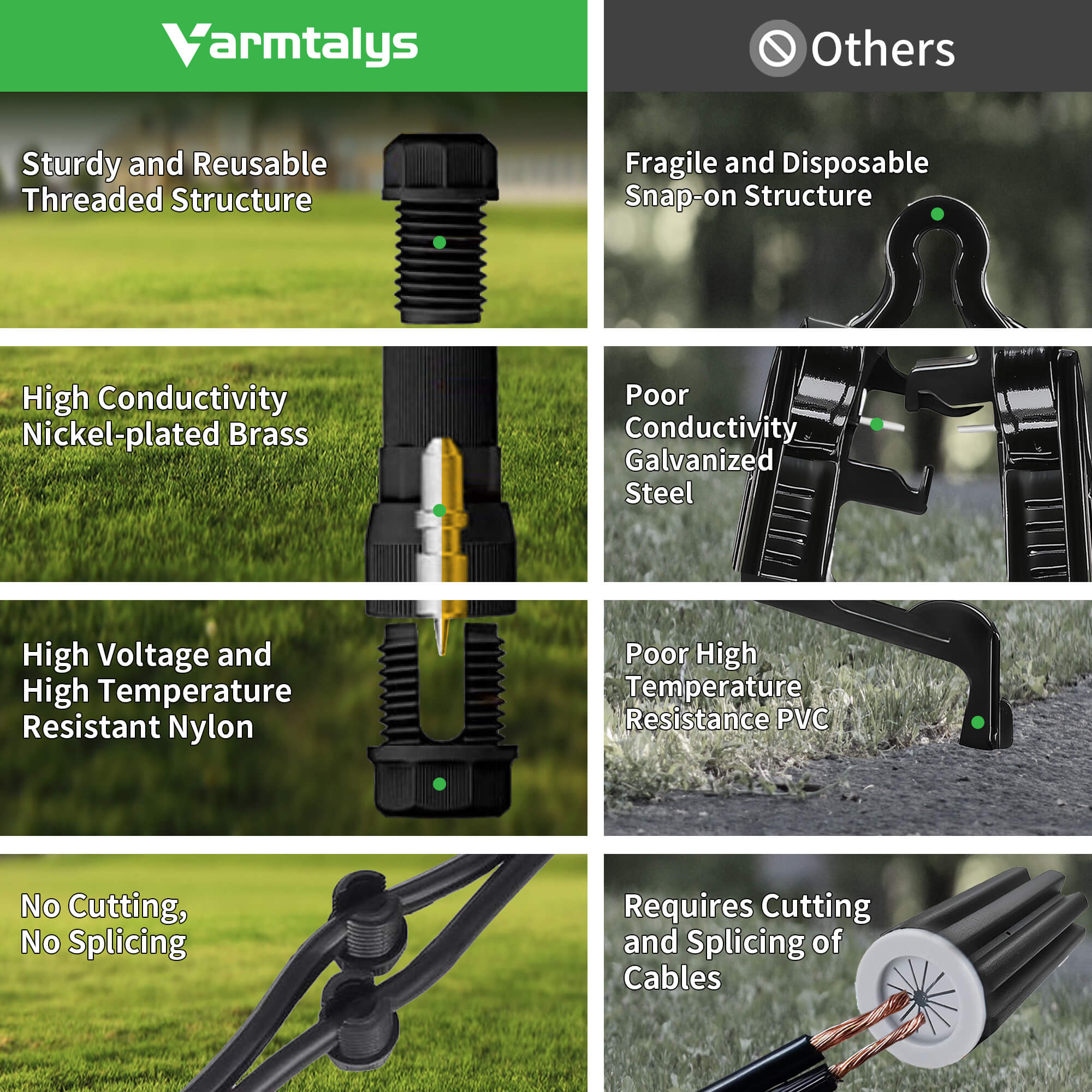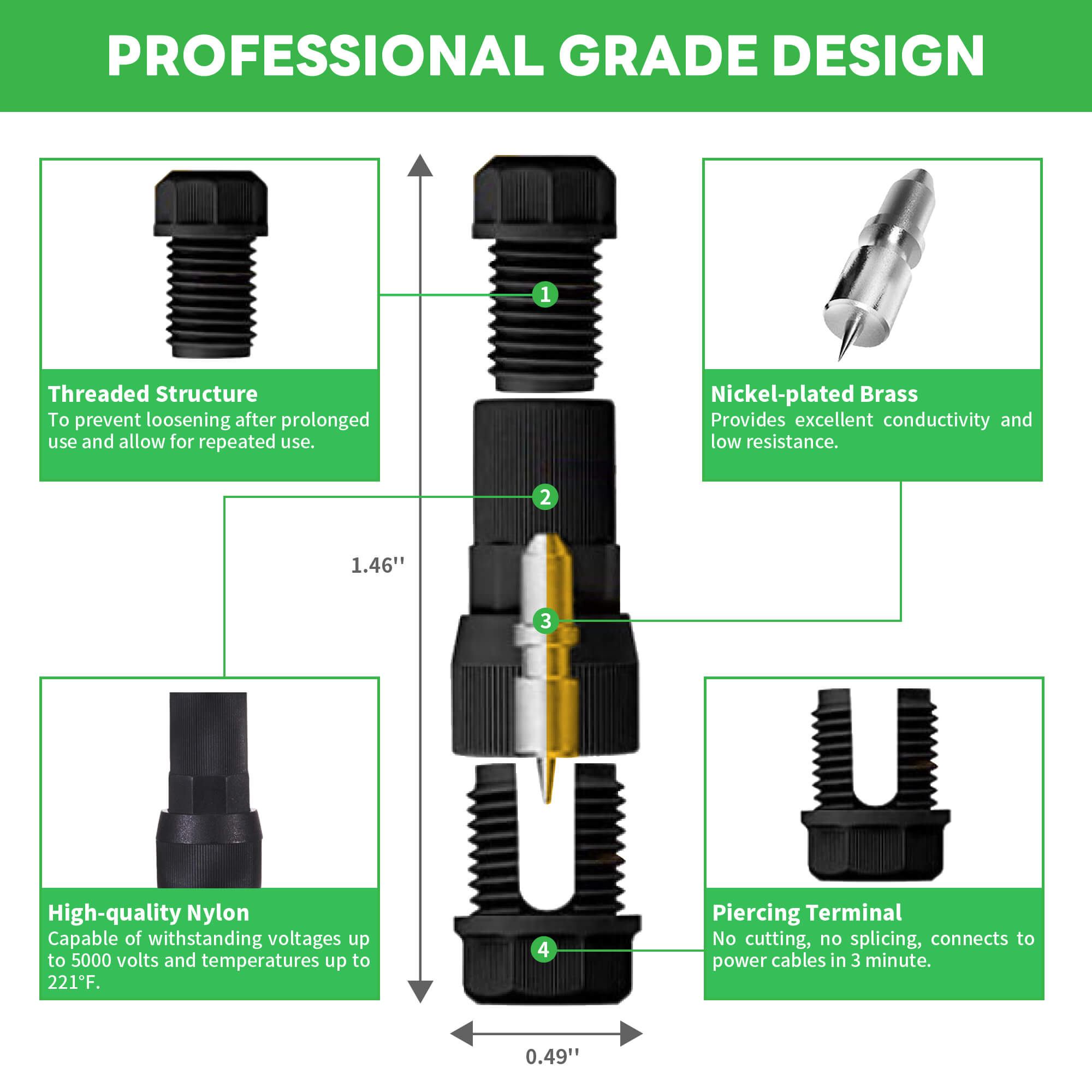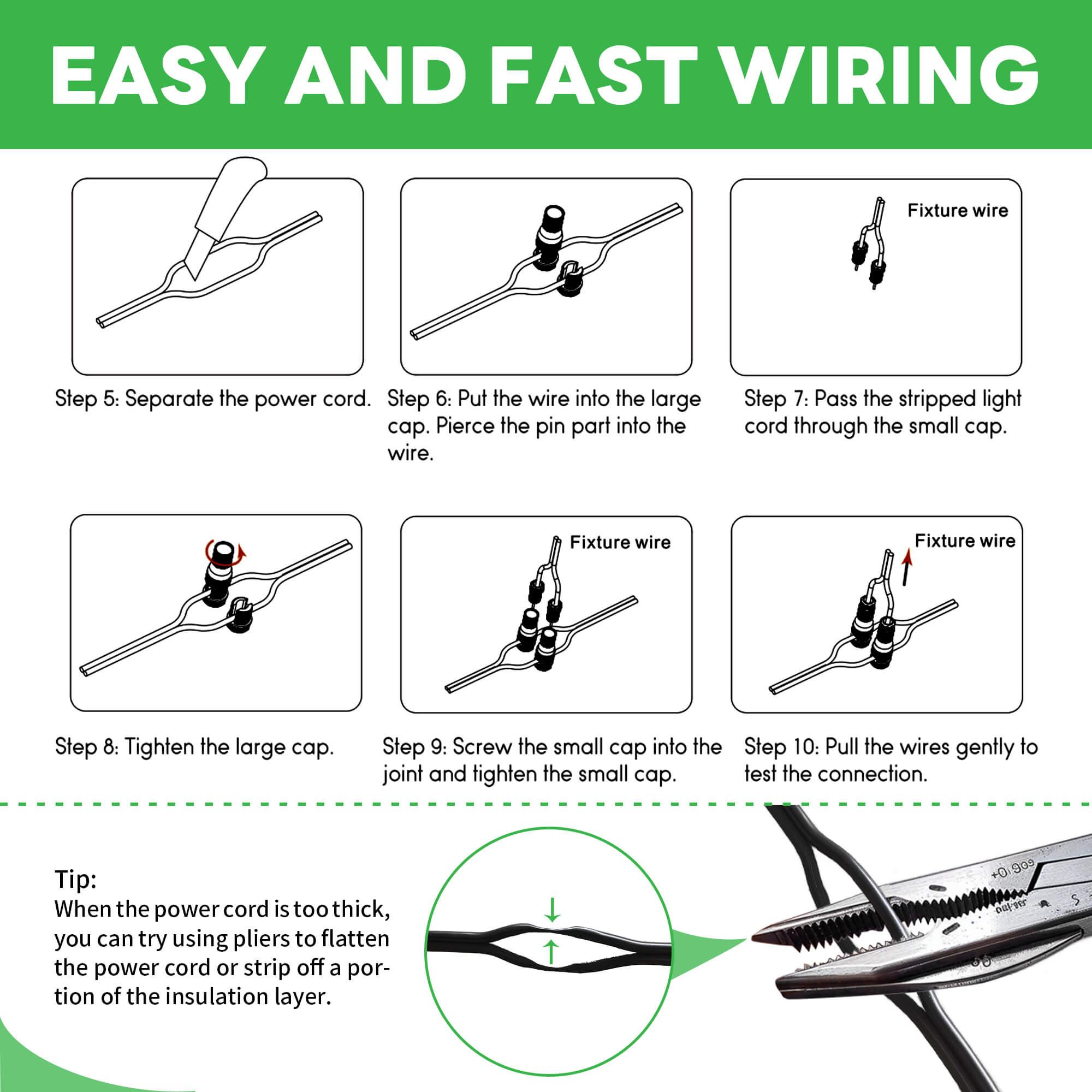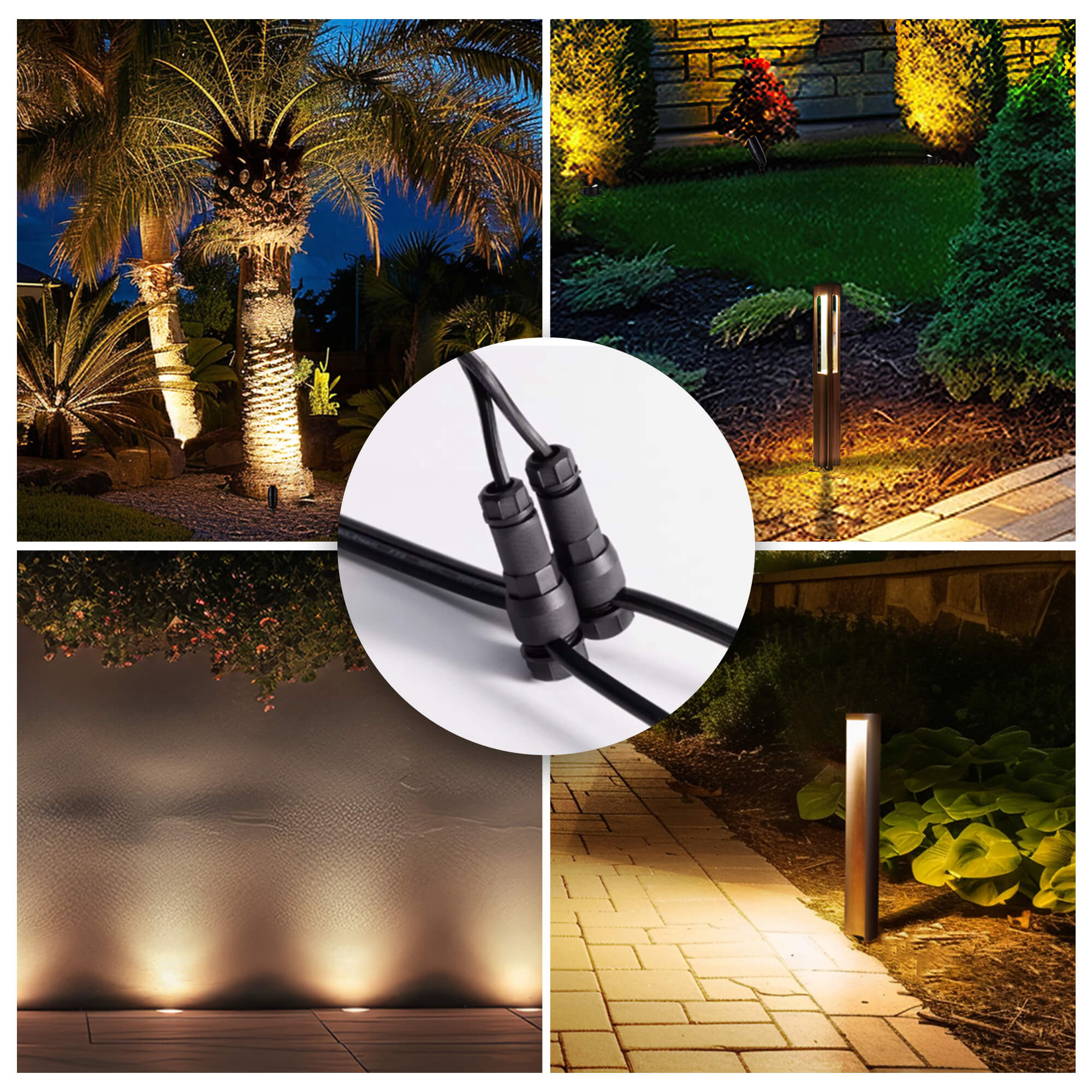Real People Real Changes
FAQ for Landscape Lighting
What are spotlights mainly used for?
Spotlights serve several key purposes in outdoor settings.
They are designed to:
Highlight Architectural Features: Spotlights are often used to accentuate the architectural beauty of buildings, walls, or structures, enhancing their details and contours with precise lighting.
Focus on Landscape Elements: In gardens and outdoor areas, spotlights bring attention to specific landscape features like trees, plants, sculptures, or water features, creating focal points and adding depth to the scene.
Enhance Security: By illuminating specific areas, spotlights can deter potential intruders, making them an integral part of outdoor security systems.
Create Ambiance: Spotlights can be used to create a desired mood or atmosphere in an area, whether it's a warm and inviting glow for a patio or a dramatic effect for a garden path.
Where are path lights typically installed?
Path lights are versatile outdoor lighting fixtures designed to illuminate and enhance the safety, beauty, and usability of various outdoor spaces. They are commonly installed in several key areas:
Walkways and Paths: To guide residents and guests by providing visibility and safety during the night, path lights are often installed along the edges of walkways and garden paths.
Driveways: Installing path lights along the driveway edges illuminates the area, making it easier for vehicles to navigate after dark and adding a welcoming glow to the home's entrance.
Garden Areas: To highlight planting beds and landscaped areas, path lights can be strategically placed to illuminate specific plants, trees, or decorations, enhancing the garden's nighttime beauty and ambiance.
Patios and Decks: Around patios, decks, and seating areas, path lights contribute to a cozy, safe, and functional outdoor living space, allowing for extended use into the evening hours.
Steps and Level Changes: For safety reasons, path lights are essential near steps, level changes, or any areas where the elevation changes to prevent falls by increasing visibility.
By carefully choosing the locations for path lights, homeowners can not only enhance the safety and navigability of their outdoor spaces but also create a visually appealing environment that highlights the property's best features at night.
How do I know how many path lights I need?
Determining the right number of path lights involves balancing several factors:
Light Spacing: For consistent illumination, path lights are best placed about 6 to 8 feet apart. This spacing helps avoid dark spots while ensuring the path is well-lit.
Path Length: Use your path's length to guide the total number of lights. For instance, a 40-foot path might typically need 5 or 6 lights, assuming you're spacing them every 8 feet. This calculation ensures the beginning and end of your path are adequately lit.
Lighting Ambiance: Your desired ambiance plays a role in deciding the number. A softer, more subtle effect may require fewer lights, while a brightly lit path might need lights placed closer together.
The lighting coverage varies with each model of our path lights; please refer to the product images for more information.
Consider these guidelines as a flexible framework. The specific lighting coverage of each path light model and your personal preference should also influence your final decision. It’s often helpful to experiment with placements before installation to find the perfect setup for your outdoor space.
Where are well lights typically installed?
Well lights find their place in various outdoor settings:
- Pathway Lighting: Along walkways and paths, offering guidance and enhancing nighttime aesthetics.
- Accentuating Landscapes: Positioned to highlight trees, shrubs, or architectural features, adding depth and visual interest.
- Architectural Emphasis: Illuminating building exteriors, walls, or unique structures for a captivating facade.
- Garden Enhancements: Within garden beds or flowerbeds, casting a gentle glow to showcase plants and flowers.
- Outdoor Living Spaces: Around patios, decks, or seating areas, creating a welcoming atmosphere for gatherings and relaxation.
- Near Water Features: Placed near ponds, fountains, or waterfalls, enhancing their beauty and creating mesmerizing reflections.
With their versatility, well lights elevate outdoor spaces, providing both practical illumination and aesthetic enhancement.
What is the difference between spotlights and floodlights?
The distinction between spotlights and floodlights is primarily based on the spread of light they provide, which affects their applications:
Beam Angle:Spotlights produce a narrow beam of light, usually between 15 to 60 degrees, allowing for focused lighting on specific areas or features.
Floodlights emit a broader beam, typically over 90 degrees, which can illuminate larger areas with a more diffused light.
Purpose:Spotlights are intended for highlighting specific points, such as architectural details, landscaping features, or artwork.
Floodlights are used for general area lighting, such as for security purposes, lighting up large outdoor spaces, or for event lighting.
Light Intensity and Coverage:Spotlights offer intense light in a concentrated area, making them ideal for drawing attention or creating dramatic effects.
Floodlights provide a uniform light that covers a wide area, suitable for visibility and safety in expansive outdoor settings.
Applications:Spotlights are commonly used in landscape lighting, accent lighting, and theatrical settings where precise lighting is needed.
Floodlights are often found in commercial, industrial, and residential security lighting, as well as in sports arenas and other large outdoor venues needing wide coverage.
Is there a plug? Are these lights for 120V systems?
The Smart Spotlight comes with an adapter plug that plugs directly into a 120V power source. Other spotlights do not come with a plug and require the use of a low voltage transformer.
Does it include a transformer?
No, you need to purchase cables and a transformer separately. It is compatible with a 9-15V low-voltage transformer.
What size transformer should I choose?
Depends on the power of the transformer and the bulbs, while the electrical energy will inevitably lose 20% of the voltage during transmission.
For example, if the transformer is 150W and each bulb is 5W, then 24 fixtures can be installed (150 x 80% ÷ 5).

